It's hard to be less than happy when you can be happy with less. - Chris Brady
24 February 2020, Les Suntanes to dusty hut, 39.4km
Wild camping UM0 (R0)
Torchlight woke me in the windy dark to find the beachsite guard kindly checking around our tent to ensure our tent pegs were still secure, which they were. It was cold and wet in the night, with (unseasonal?) rain, but we slept cosy, warm under our three-season sleeping bags.
We had not showered yesterday, put off by a man peeing in the only shower stall, but we did not feel particularly grubby having cycled only a short distance from the city. Not being able to bathe tonight again was unexpected and left us feeling somewhat grubbier…
We got up later than planned, waiting for the drizzle to dry. All those who had slept in their camper vans had gone by the time we had packed and were ready to leave. We angled away from the 2km dirt road we had travelled to the beach yesterday, picking up a purpose-built tar road to the Qatar hotel-restaurant-conference centre that abuts Les Suntanes. There was a guard near the Qatar complex, whose dogs took barking exception to us, until he called them off. The new section of tar linking the beach to the N2, took us quickly back to the main road north.
It was windy, but the first 10 to 15km were manageable. As the wind grew stronger, however, our pleasure in the easy terrain decreased. So debilitating was the wind, that it took us six hours to do just 39km, an average of a little over 6km per hour on a flat road. We reached the 39km mark just after 14:00, the site of the abandoned (almost) village of Belawakh. Just a scatterling of empty huts, a partially-built mosque, and one bigger shop-house which later turned out to be occupied by a single man.
We investigated behind the mosque, thinking perhaps to find a campsite out of the wind, but decided instead to push on for the known auberge at Tiwilit. We managed literally only another 3km before the wind began to blow so strongly we could barely move, or see. Sand and dust gusting across the road and filling the air around us, turning our world all one dun colour, and violent.
So we turned our bikes south, Belawakh-bound. What an extraordinary difference! There was literally no need to pedal. We simply sat on the bikes, and were wind-pushed back to the village even though the wind was angled just barely behind us, blowing from the northeast. I, in fact, used my brakes to slow my progress and prevent myself being blown off the road edge, especially in the vortex of the odd passing truck, unheard in the blast of wind and seen only once almost beside us.
We lifted our bikes over a low boundary wall and wheeled them into the partially-constructed mosque, sitting on bricks out of the wind. The floor, walls and roof were up, though neither plastered nor painted; the window and door embrasures open to the elements. We were very glad an hour later that we had not yet erected our tent as a bus pulled up and around 20 men and one woman got out and came into the mosque to pray. Actually, some of the men came in, some prayed outside, as did the woman. Their arrival explained the empty plastic water bottles littered outside the mosque and in the surrounding desert, worshipers having to bathe prior to prayer. We immediately exited the mosque to let the men pray in peace, and although no-one showed disapproval of our presence, at least not openly, we thought it best to find somewhere else to set up home for the night, opting for a simple wooden hut nearby. We were glad to have done so as several more vehicles stopped during the afternoon and evening and after dark.
The hut comprised one rectangular room, with an open storage bin in one corner and a short bench, just long enough for two. The walls were constructed of narrow wooden planks, wide gaps between each plank sneaking light into the windowless space. The walls had, in their heyday, been covered in plastic fabric that would have prevented wind-blown sand invading the living quarters, but the wind shields were in tatters and every surface, including a pile of scattered clothes limp on the floor, was covered in several centimetres of fine dust. The tin roof was not wholly secure, the malevolent wind lifting and slamming down the edges, a noisy clanging through the long afternoon and night. Not far from the hut was a defunct loo in its own building, a public loo no doubt. Although it was not a functional loo, at least it offered privacy for a pee.
In the early evening, we saw a lone man wandering near the hut and, as we believed he had either heard or seen us, I went out to ask his permission to “dormir ici” (sleep here). He seemed unfazed by our presence and happy for us to stay. We thought we saw him later at the only functional structure in the village…
It was instant Japanese noodles for dinner, easy to make, but less than entirely satisfying. We were glad that one of the men who had de-boarded the bus earlier had left an un-opened bottle of water in the mosque and that we had had the foresight to commandeer it as it came in handy during the long, dusty hours…
For today's route see below photos
For overview route, click on ROUTE tab above…
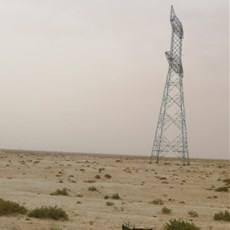
Les Sultanes to dusty hut
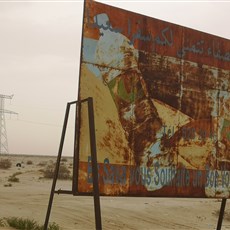
Les Sultanes to dusty hut
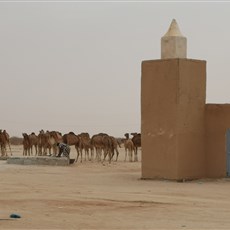
Les Sultanes to dusty hut
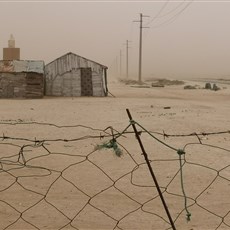
Les Sultanes to dusty hut
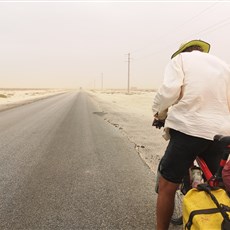
Les Sultanes to dusty hut
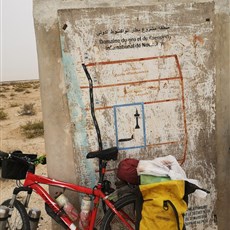
Les Sultanes to dusty hut
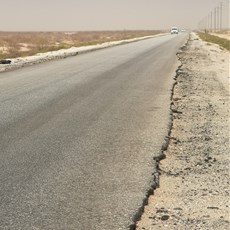
Les Sultanes to dusty hut
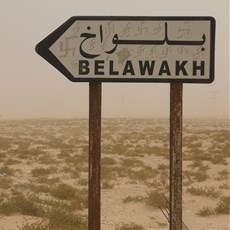
Les Sultanes to dusty hut
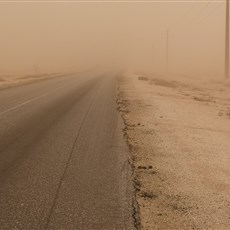
Les Sultanes to dusty hut
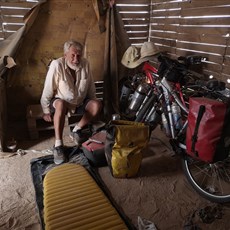
Les Sultanes to dusty hut